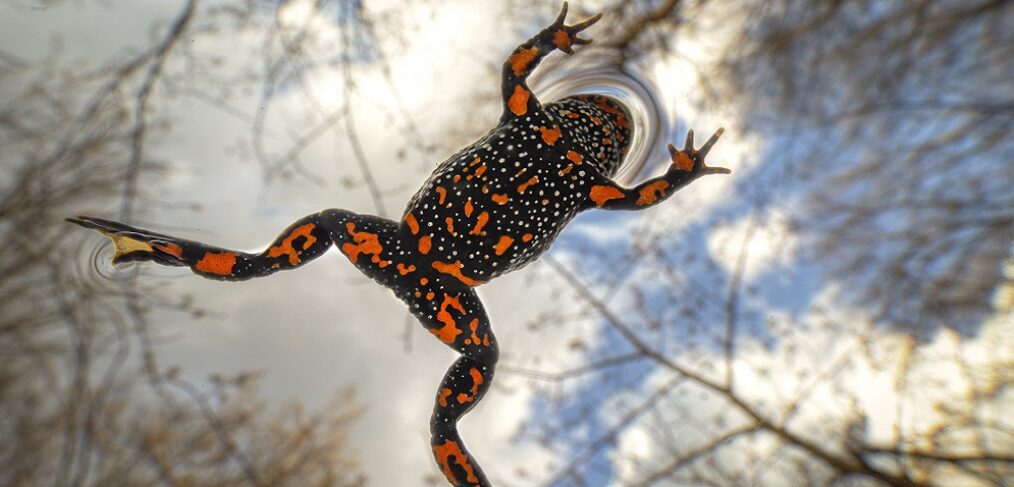
Species of the week #116 – European fire-bellied toad
With their orange-red underside and heart-shaped pupils, the males of the fire-bellied toad are hard to miss all year round, but they are at their best during the mating season in spring. During courtship, they resemble bodybuilders: they grow particularly strong, dark “rutting calluses” on their lower legs and first two toes. They are also conspicuous acoustically: on their way to the spawning grounds they let out their melancholy-sounding “owl calls”. They march off with great determination and do not shy away from obstacles. They do not avoid roads either, so cars are often their undoing.
| Distribution status in Rhineland-Palatinate | extinct |
| Remaining occurance | Mecklenburg-Western Pomerania, Brandenburg, Saxony, Schleswig-Holstein |
| Last sighting | unknown |
| Habitat | Vegetated, sunny floodplains, ditches and temporary floodplains |
| Threat | Destruction of small water bodies, motor traffic |
The underside of the fire-bellied toad is dark grey to black in colour and bears a conspicuous orange-red spot pattern. At 4.5 to 5 centimetres in size, it is a smaller frog, mainly found in Central and Eastern Europe. The animals prefer to live in lowlands, while their relatives, the yellow-bellied toads, tend to live in hilly and mountainous areas. Besides mosquito larvae, they prey on beetles, bugs, ants, springtails, water isopods, arachnids, millipedes and snails.
- Conservation and renaturation of floodplains
- Connect existing habitats
- Protection of habitats from angling and agricultural inputs
Click here for more exciting species of the week
